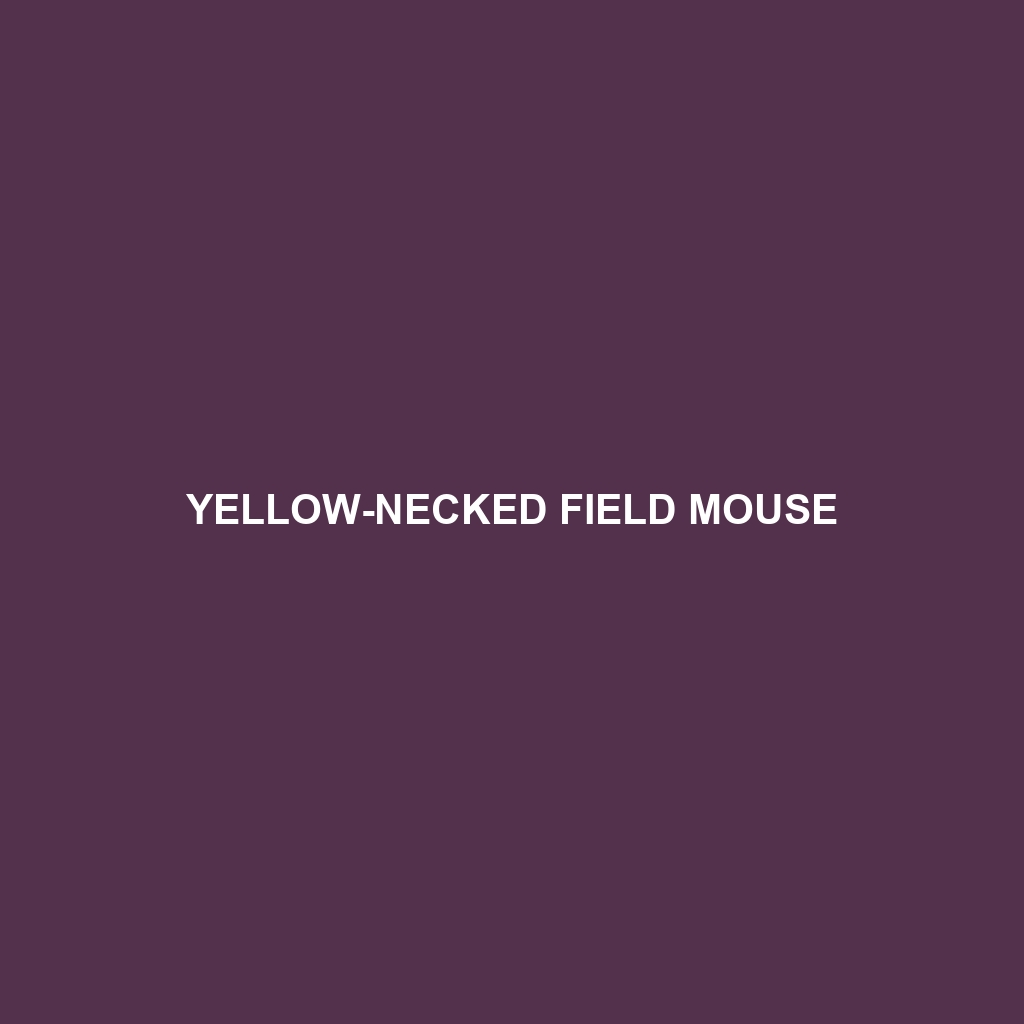Yellow-necked Field Mouse (Scientific Name: Apodemus flavicollis)
Common Name: Yellow-necked Field Mouse
Scientific Name: Apodemus flavicollis
Habitat
The Yellow-necked Field Mouse is primarily found across various regions in Europe and parts of Asia. This species thrives in diverse environments, including deciduous forests, grasslands, and scrublands. They are commonly spotted in well-vegetated areas where dense undergrowth offers protection and abundant food sources.
Physical Characteristics
This small rodent averages about 8 to 10 inches in length, including its tail, which can be as long as its body. The Yellow-necked Field Mouse develops a distinctive yellowish or orange collar around its neck, which sets it apart from other field mouse species. Its fur is typically brown or gray, with lighter underparts. The ears are relatively large and rounded, aiding in their excellent hearing capabilities.
Behavior
Yellow-necked Field Mice are primarily nocturnal creatures, emerging at night to forage for food. They are known for their agility and quickness, which helps them evade predators. These mice are also social animals that often live in small groups, utilizing their extensive burrow systems for shelter and nesting. Their behavior includes hoarding food in preparation for winter months, showcasing their adaptability and forward-thinking survival strategies.
Diet
The diet of the Yellow-necked Field Mouse consists mainly of seeds, fruits, and vegetation. They are known to consume various types of grains and nuts, making them particularly important for seed dispersal in their habitats. Their foraging habits not only contribute to their survival but also play a crucial role in the ecosystem, promoting plant growth.
Reproduction
Yellow-necked Field Mice reproduce rapidly, with breeding seasons typically occurring in spring and summer. Females can produce up to three litters each year, with each litter containing 3 to 7 offspring. The young mice are born blind and hairless and begin to gain independence after a few weeks, showcasing a remarkably fast maturation period.
Conservation Status
Currently, the Yellow-necked Field Mouse is not classified as endangered or threatened. However, habitat loss due to urbanization and agricultural practices poses a potential risk to their populations. Ongoing monitoring of their numbers and habitat conditions is necessary to ensure their long-term survival.
Interesting Facts
Here are some fascinating facts about the Yellow-necked Field Mouse:
- They are excellent climbers and can easily navigate trees and shrubs.
- The yellow neck coloration is most prominent during the breeding season, serving as a signaling feature to attract mates.
- These mice can jump up to 20 times their body length, a remarkable skill that helps them evade predators.
Role in Ecosystem
The Yellow-necked Field Mouse plays a vital role in its ecosystem. They are an important food source for various predators, including birds of prey, snakes, and small mammals. Moreover, their foraging and nesting activities contribute to soil aeration and seed dispersal, directly impacting the health of their habitat and promoting biodiversity.
